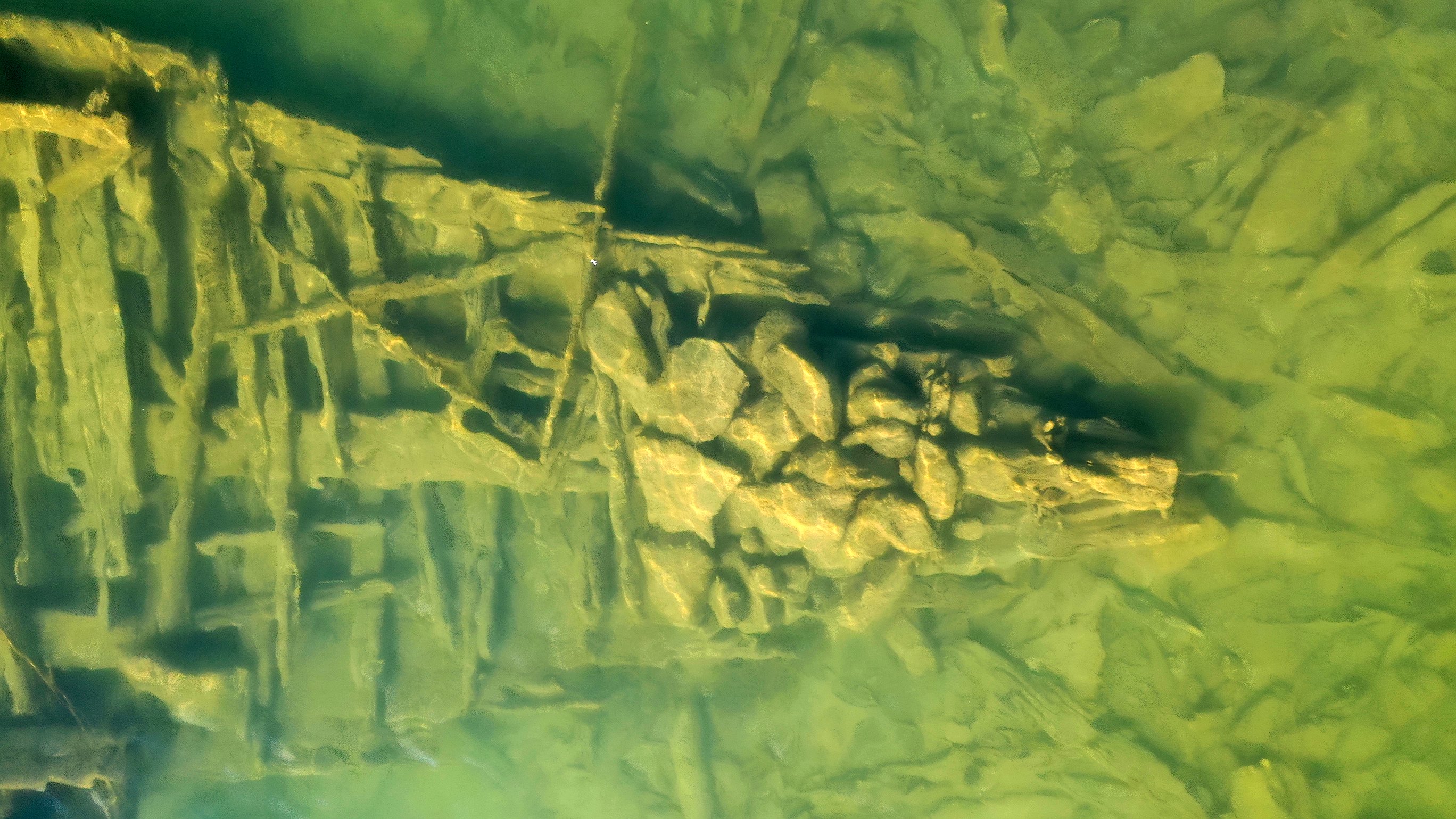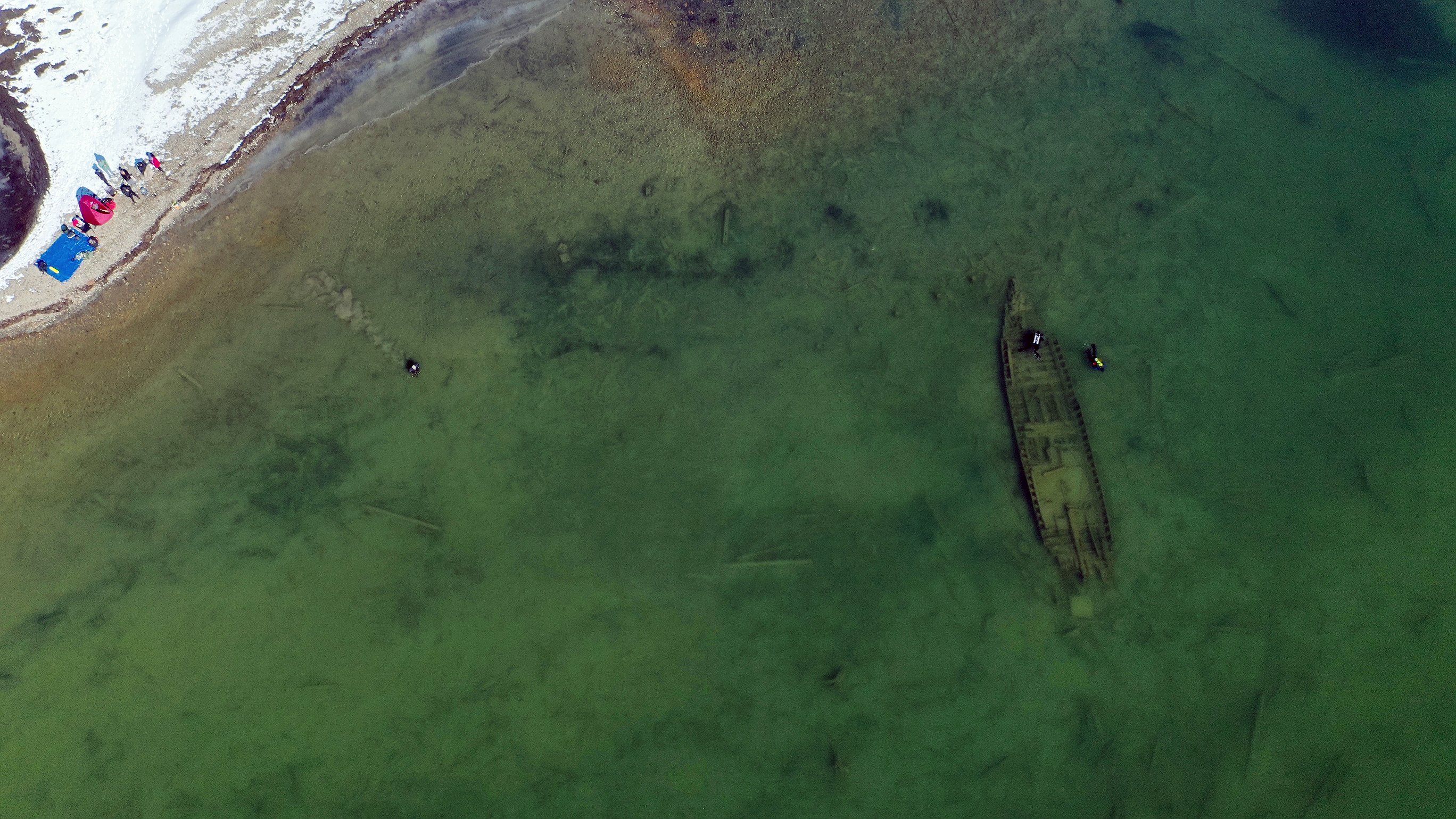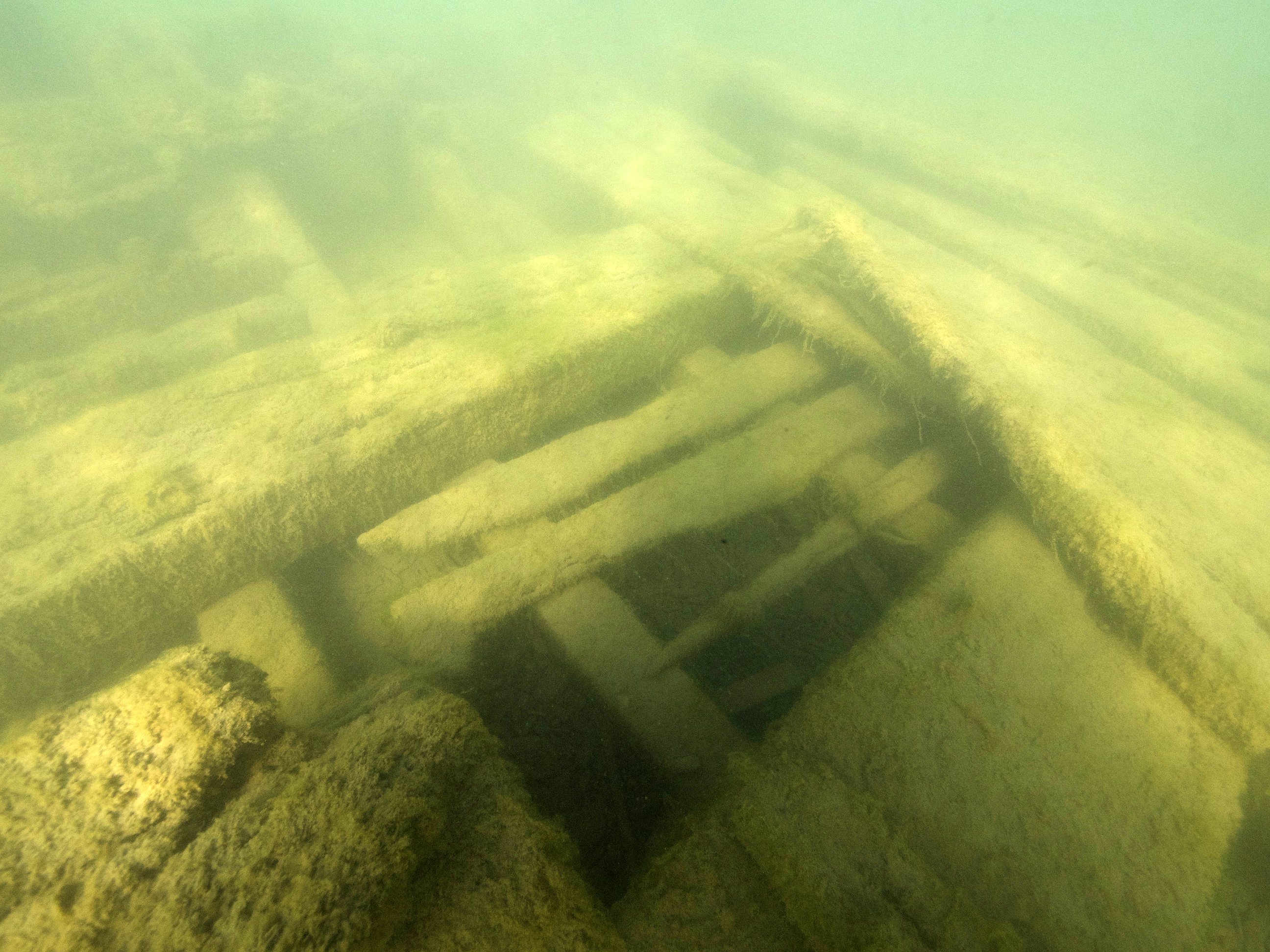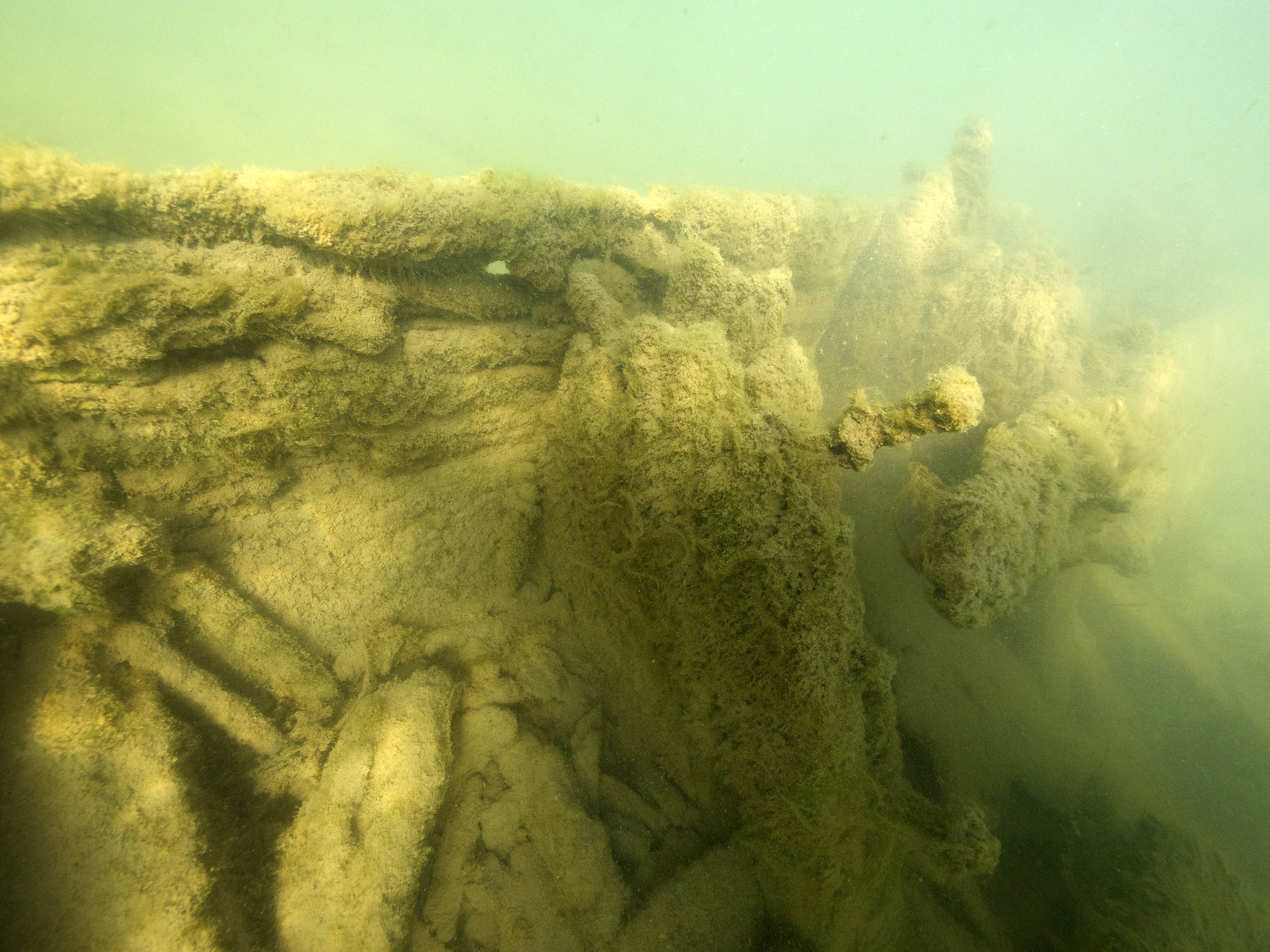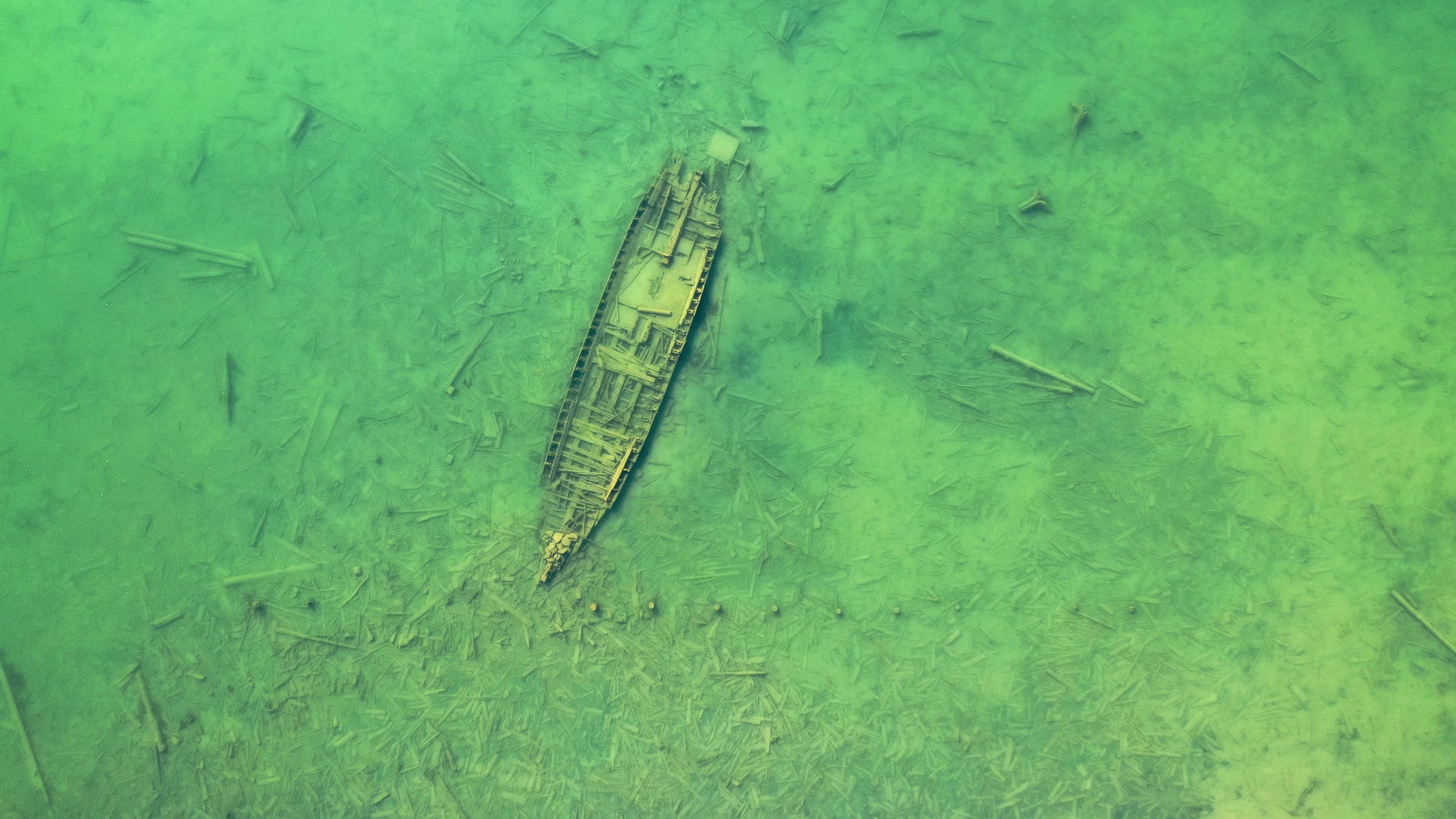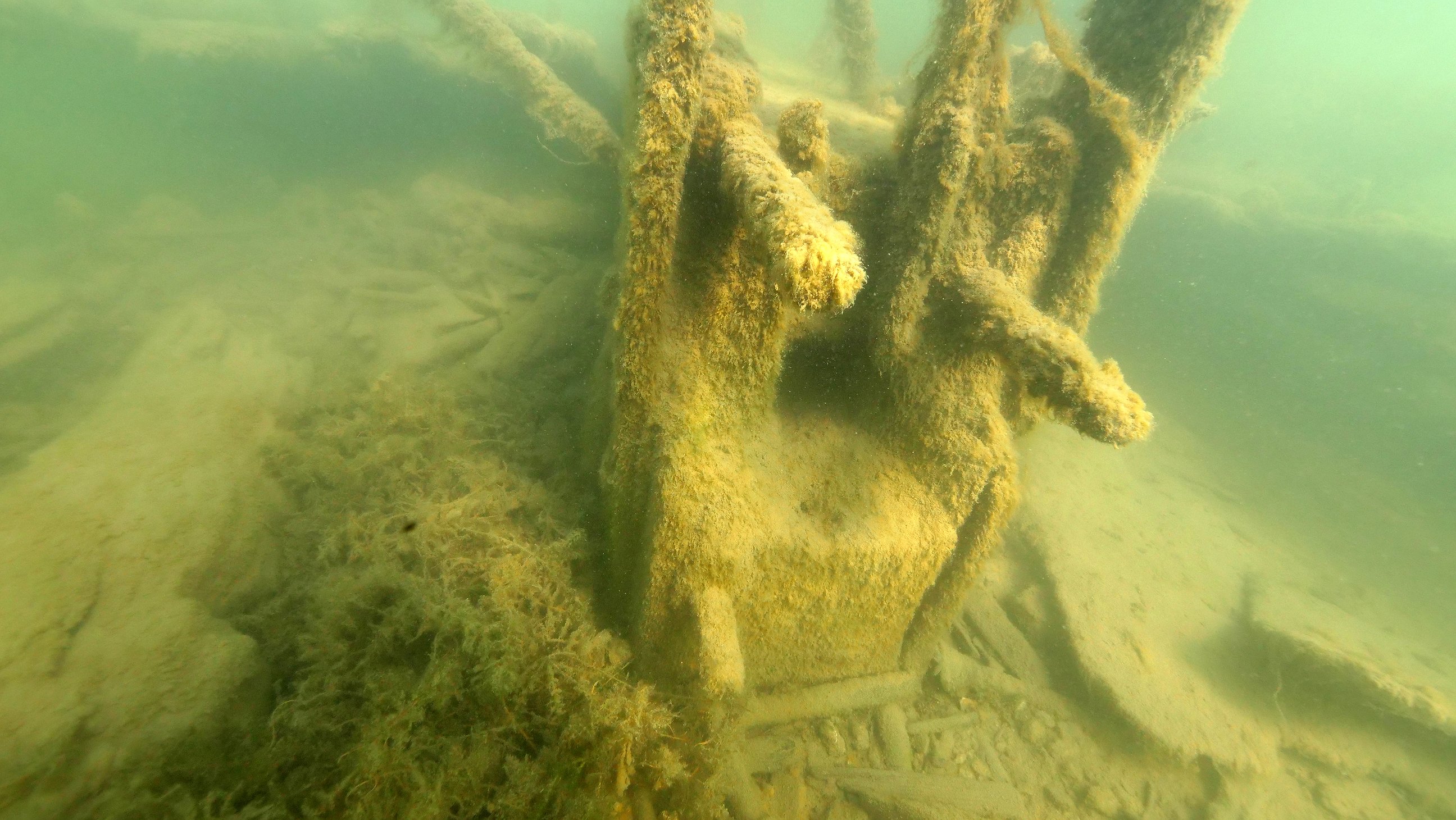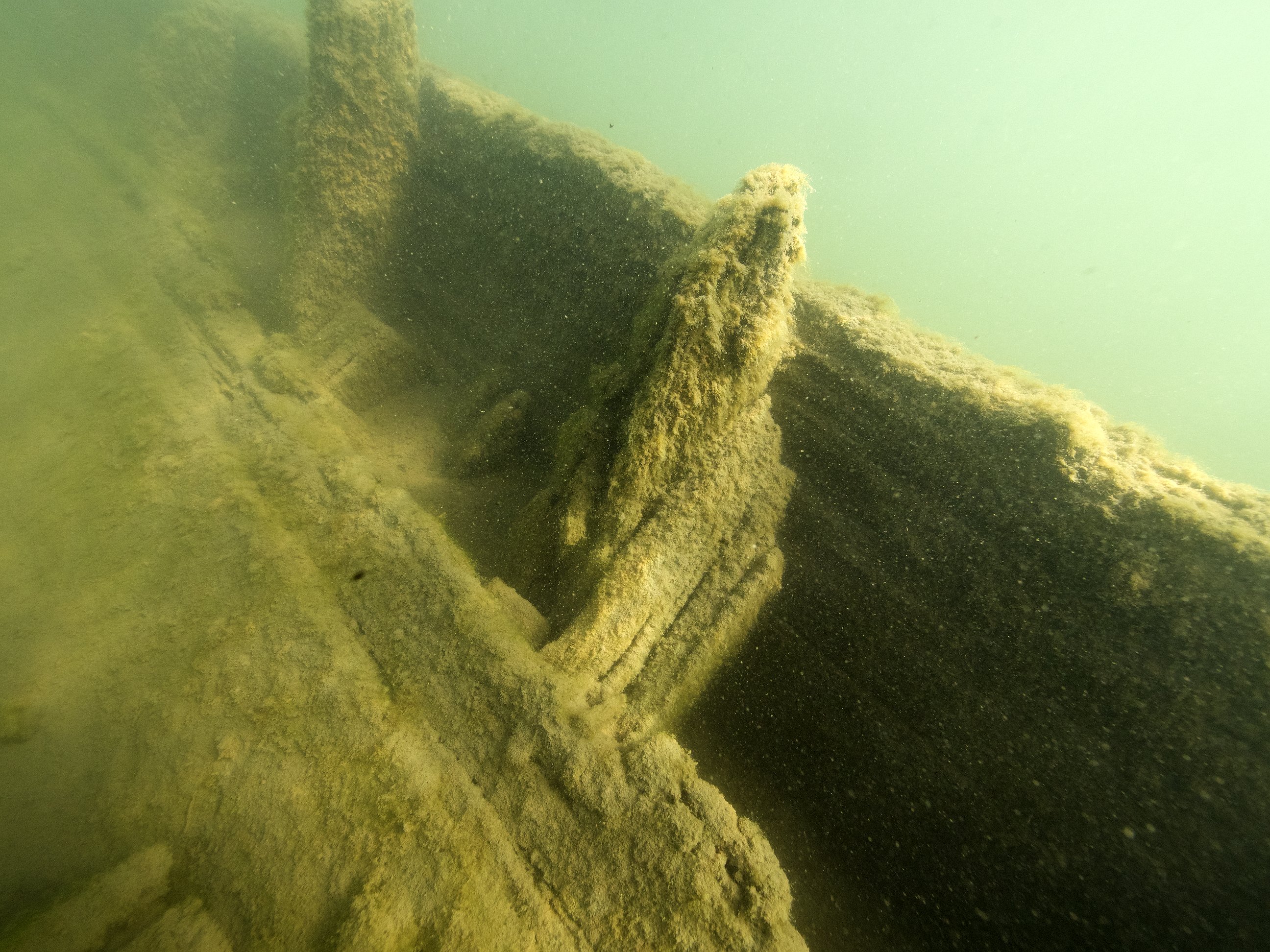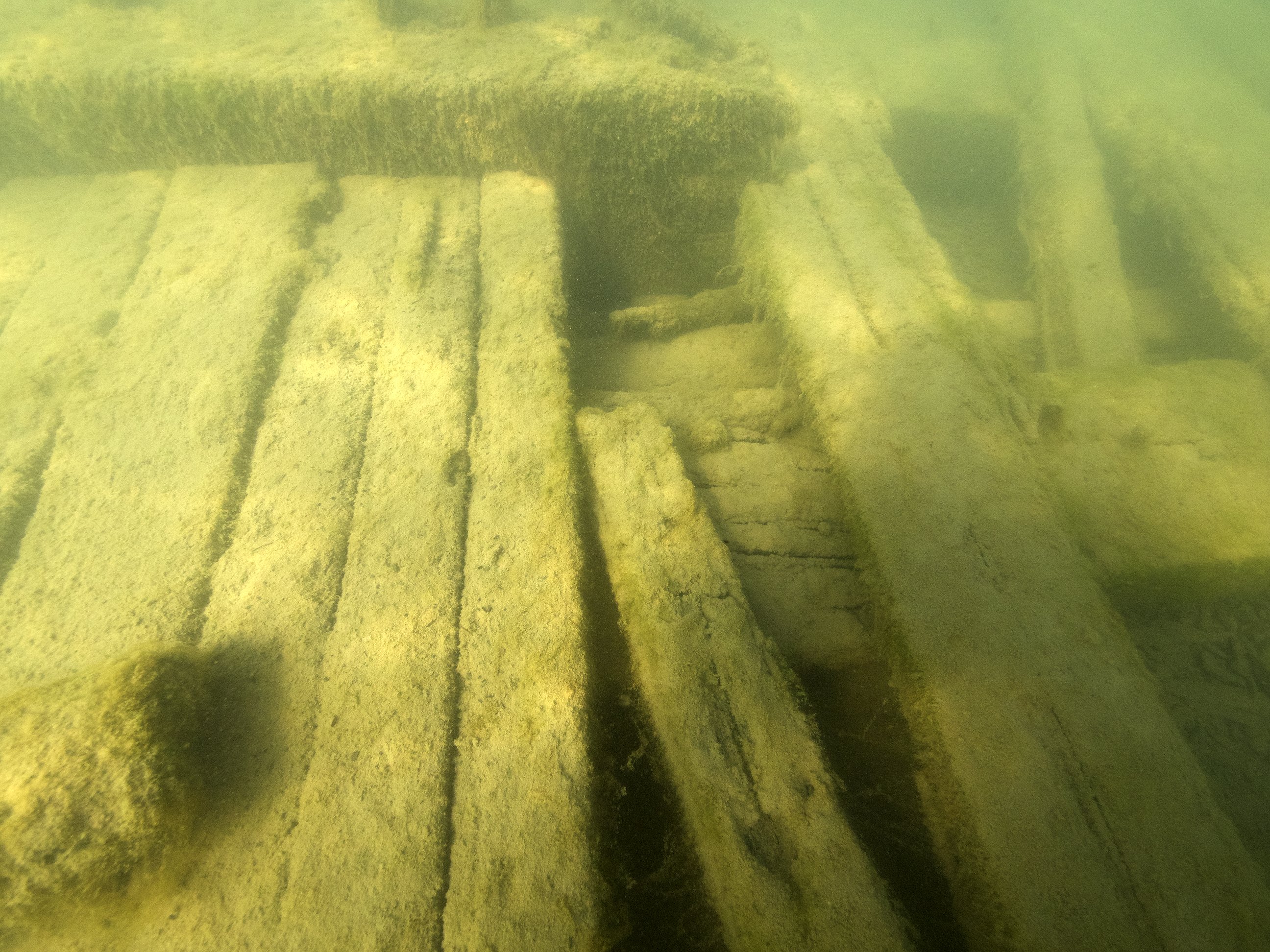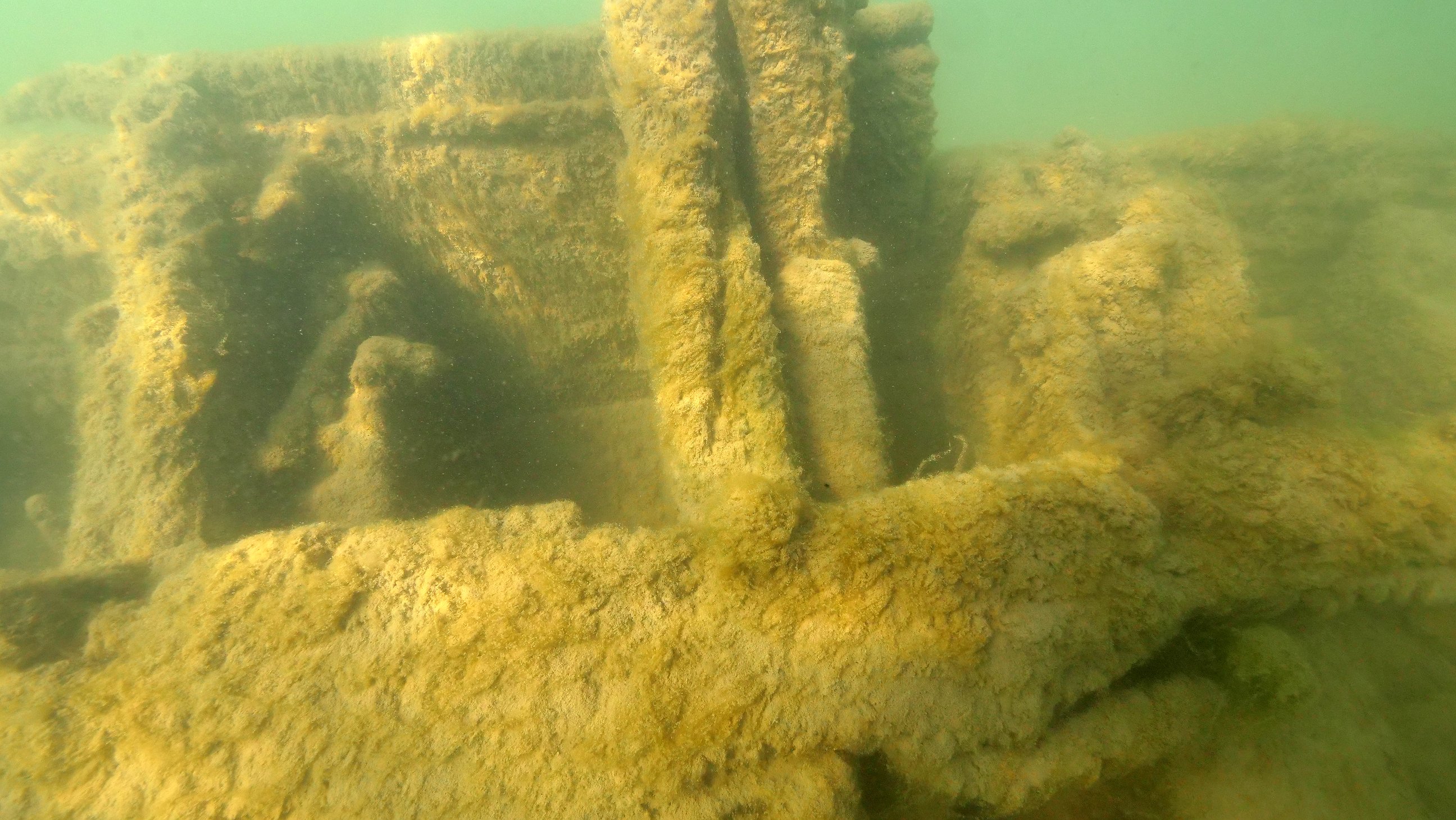Historic mystery
▶️ Audio story available.
It's likely she was deliberately sunk; the rocks piled in the front of the bow attest to that.
But her name? Her story? When she operated in the community? Those are among the mysteries the Bonner County Museum hopes to solve, starting that journey with a dive into a recently discovered historic wreck.
"When [museum director Hannah Combs] sent me these pictures, I was kind of blown away because it's clearly, you know, as someone who checks out these and dives on them a lot, it's clearly a steamboat," area diver Chris McNaughton said. "Most of the steamboats were mapped in the '70s, and this one is not on any map, so we're pretty confident in saying this is the biggest wreck found between Coeur d'Alene and Ponderay within the past 50 years."
The location of the wreck is not being disclosed in order to protect the site, which is part of an ongoing archaeological research project.
"Underwater archaeological sites are incredibly vulnerable to damage from environmental conditions and human contact," Combs said. "Our goal is to thoroughly document the vessel in order to learn what it can tell us about early life in Bonner County, and to do so successfully, the site must remain undisturbed."
Little is known of the vessel beyond her dimensions; her name is a mystery, as is her exact age. While it appears built for journeys close to shore along the lake or the river, even that is not entirely known, McNaughton said.
A flat-bottomed boat, the vessel is a single-screw propellor — a fairly rare design, with most vessels designed for such travel having a double-screw propeller. While wooden, the boat was wrapped in steel — likely because it was year-round and the metal cladding was needed to help break through the ice.
"It was pretty spectacular," McNaughton said of catching his first glimpse. "This wreck, this vessel, was once significant to the economy of this region. There are probably descendants still here of the men who built this boat."
While tasked with capturing the drone footage and shore support, fellow dive team members Austin Smith and his fiancé Cailey Vallone said being a part of the project is an amazing experience.
"It's just incredible," Smith said of seeing the vessel. "You can see every single rib on that boat. You can see the pulleys, just sitting on the bottom, and you can see the rudder as well."
The vessel was possibly built anywhere from the 1910s to 1930s due to its style and construction, according to John Pollack, a maritime archaeologist with the Underwater Archaeological Society of British Columbia and the Institute of Nautical Archaeology.
The team took care to document the wreck site via drone and underwater cameras and took careful measurements of key spots on the boat. They also documented unique features and took notes on the debris field — boards, screws, and old steel siding pulled off a section by time and the constant motion of the water.
The boat measured 66 feet from the tip of a metal pipe at the front of the hull to the back, where the stern once was. When intact, McNaughton said the boat was likely 70–75 feet long with a massive steel rudder the size of a conference table.
At the moment, museum officials have narrowed potential candidates to nine boats that match the known dimensions and whose location is not yet known. However, McNaughton said the vessel could also be another boat not on that list.
"There are a couple of solid key features of this boat where if we can find a photograph or a record, or a blueprint, we'll be able to be pretty on the nose [with the identity] because it's very specific," he added.
The boat appears to have been deliberately scuttled, based on the mass of heavy stones weighted at the front of the bow. That would have sent the bow underwater, causing it to eventually sink.
"It was very obvious from the pictures that we saw, let alone going down to the wreck, that this was intentionally sunk, which was pretty common practice back in those days," McNaughton said.
Once repairs were either too expensive or not practical, boats would be stripped of anything valuable or that could be reused. The hulls were then either sunk or burned.
Last week's dive by the team of professional divers and archaeologists assembled by the museum and McNaughton marked the start of research into the vessel, its origins, and its history. It could take months to complete that research, which is being done with the highest level of care to ensure the vessel and all associated artifacts are not damaged in the process, Combs said.
"His expertise and passion for investigating delicate underwater historic sites have given the museum the opportunity to conduct active research on a previously undiscovered vessel that could teach us a lot about early travel and industry in North Idaho," Combs said.
Future dives will explore more of the vessel, what was left on the vessel when it was sunk, and more in an effort to learn more of her story.
"The historical context is incredibly important for future generations," Smith said. "… We're hopeful that it's going to last for generations to come. That is one of our main concerns. Obviously, if we don't have everything that somebody 30 years from now wants from that site, then we're out of luck at that point. If somebody comes through and takes loose items from it, then those future archaeologists are not going to have that context. And that's one of our biggest concerns."
The site is under active investigation by the museum, area archaeologists, and authorized divers. Any disturbance of the site or removal of any items would result in the loss of potentially critical information needed to learn — and tell — the vessel's history.
It is also against the law to take artifacts from such sites.
"Any artifact recovery without permission from the state archaeologist is illegal," McNaughton said.
The trio said they all know divers who have found old gambling machines on either the Coeur d'Alene or Pend Oreille. Now they sit in someone's garage, unused, and slowly decaying.
"This stuff belongs to the public, absolutely," McNaughton said.
Even if someone doesn't take anything from a wreck site, significant damage can be done through inattention or by "loving" something too much.
McNaughton remembers an old antique car that somehow ended up in Lake Coeur d'Alene and was a popular dive site. When he first saw it as a young diving student, the car was pristine and looked like it had just been driven off the showroom floor. Now, it's "pretty much flat" from damage caused by divers unfamiliar with how to dive around wrecks.
"Now that's a site that is lost to time, lost to history because people just didn't know," McNaughton said.
The vessel was discovered by Travis Holycross, who was out flying his drone near the site. Intrigued by the murky, shadowy shape, he snapped a photo or two, later showing it to a neighbor who suggested he show it to the museum.
After seeing the photo, Bonner County Museum officials contacted McNaughton, whom they'd met when he visited the museum several years ago while researching a previous dive in the area.
Curious about the shape, museum officials contacted the Explorers Club member and asked if he would be interested in checking it out for them.
McNaughton immediately said yes.
A member of the Explorers Club, a multidisciplinary society dedicated to promoting scientific exploration and field study, McNaughton contacted fellow divers and archaeologists with the club. He contacted state officials to get permission to make the dive as part of the project to recapture the boat's lost history.
That drive to discover its history for the community is shared by Smith and Vallone.
"That's a really big one for me — the puzzle of it all — researching online, finding the background information to get as much context as you can [to capture the history]," Smith said.
McNaughton, Smith, and Vallone encouraged others to follow Holycross' example, which led to the discovery of the previously unknown wreck.
"If you do go into the water or out into the woods and you see something that seems like it could be historical ... especially if it's not around a big walking path or tourist area, it's important not to disturb it, take a few photos and send it to your local museum," McNaughton said. " … That's something that's really important because so many wrecks have been found [because someone was curious]."
McNaughton got into diving as a teen, growing up near Diamond Lake, Wash., and wondering lay beneath the surface. When he turned 18, he signed up for lessons and never looked back. He is now professionally certified and is licensed to teach scuba diving, including technical dives around wrecks.
Smith got hooked about five years ago when he was working for a friend of McNaughton's. The pair were planning to go dive a wreck in the region and needed a hand, offering to teach him to dive if he was interested in coming along to help.
"I was like, yes, yes, hands down, yes," Smith said with a smile. "When do I need to be there?"
It wasn't too long afterward that Vallone joined the band of divers, having gotten her initial certification as a student at Eastern Washington University.
While he understands the urge to explore the mysteries of the region's lakes and waters, he urges caution when exploring — whether it is above ground or the depths of local waters.
"Really do your best to not disturb anything," McNaughton said. "If it's something that interests you, if it piques your interest, go check it out, take pictures, and then contact people about it later."























